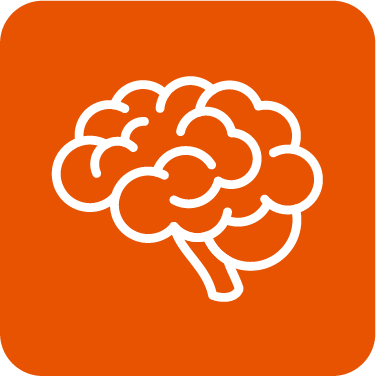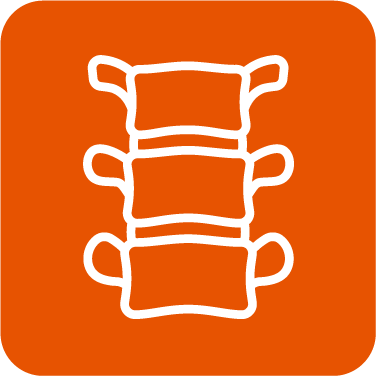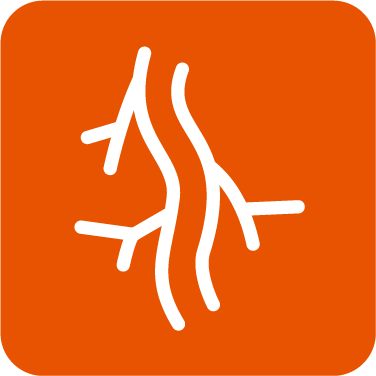Neurosurgery
A neurosurgeon is able to do both surgical and nonsurgical treatments to your entire nervous system, including your brain, spinal cord, back, neck and peripheral nerves. They will also diagnose and treat conditions of your spinal disks and vertebrae, your skull, brain and blood vessels. Neurosurgeons have advanced training to understand the delicate role that nerves play in your body.
Your nerves begin in your brain and then form in the spinal cord and radiate outward into your arms and legs. Neurosurgeons have a deep understanding of the entire nervous system from the brain to nerves in your arms and legs and and the vital bones that surround and protect them. For this reason, you should receive treatment for the nervous system from a neurosurgeon.
When to see a neurosurgeon
How is a neurosurgeon different from other specialists?
Neurosurgeons treat the entire spectrum of the nervous system from the brain, to spinal cord and column, to nerves into your arms and legs. They have advanced training to treat all conditions of the brain and vertebral column.
When should you see a neurosurgeon and do I need a referral?
No referral and no initial imaging is required before you schedule with one of our providers. Online scheduling is available at your convenience with advanced practice providers.
 Procedures and treatments
Procedures and treatments
Spinal procedures performed by a neurosurgeon may include:
- Minimally invasive discectomy / decompression
- Endoscopic surgery
- Artificial disk replacement surgery
- Anterior lumbar interbody fusion
- Oblique lumbar intebody fusion
- Lateral lumbar interbody fusion
- Spinal deformity correction
- Scoliosis correction
Brain procedures performed by a neurosurgeon:
- Open craniotomy for brain tumor removal
- Endoscopic tumor removal
- Endoscopic pituitary tumor surgery
- Aneurysm clipping and coiling
- AVM removal
- Chiari decompression
- Shunt for hydrocephalus
- Radiosurgery
 Brain conditions
Brain conditions
Congenital brain conditions: Arachnoid cysts are fluid-filled sacs that can be a remanant of development within the brain or spinal canal. While most do not require surgical intervention, treatment might include removal or draining.
Chiari malformation type 1 (tissue extends into spinal canal) appears in childhood or adulthood. A few of the symptoms can include:
- Severe headache
- Poor hand coordination
- Trouble swallowing
- Sleep apnea
- Arm and leg weakness, numbness, tingling
Chiari malformation type 2 (almost always occurs with myelomeningocele, a form of spina bifida). A few of the symptoms can include:
- Changes in breathing patters
- Trouble swallowing
- Quick downward eye movements
Brain tumors
- Primary brain tumors
- Gliomas related tumors
- Astrocytoma
- Glioblastoma (most common type of malignant brain tumor)
- Oligodendroglioma
- Ependymoma
- Choroid plexus carcinoma
- Embryonal tumor (most common type of is medulloblastoma)
- Pineal tumors)
- Benign tumors
- Meningiomas (most common type of benign brain tumor)
- Shwannoma
- Acoustic neuroma
- Pituitary adenoma
Hydrocephalus conditions treated by neurosurgeons
- Obstructive hydrocephalus
- Due to tumor such as colloid cyst, tectal glioma
- Hemmoraghe
- Normal pressure Hydrocpehalus
- Pseudotumor cerebri or idiopathic intracranial hypertension
Peripheral Nerve Entrapment
- Carpal tunnel syndrome
- Cubital tunnel
- Peroneal nerve
 Spinal conditions
Spinal conditions
We treat patients of all ages with both surgical and non-surgical treatments. Get treated by our board-certified neurological surgeons, pain management specialists or physical medicine and rehabilitation specialists.
Degenerative conditions of the spine occur as part of the normal aging process. Nearly everyone experiences some degeneration of spinal discs or spinal joints.
- Acquired and congenital spinal deformities
- Degenerative disc disease — result of spinal discs wearing down
- Degenerative spine conditions
- Disc herniation — when part of the disc pushes on a nerve
- Sciatica – pain going down the leg from the lower back due to the sciatic nerve
- Scoliosis
- Spinal stenosis — narrowing of the spinal canal, commonly in lower back or neck
- Spondylolisthesis and spondylolisthesis — when a vertebra slips out of alignment
Spinal deformities, or curvature in the spine, often develop during growth in adolescence. In some cases, deformities can develop during the adult years as well.
- Adolescent scoliosis
- Adult scoliosis
- Kyphosis — spinal deformity characterized by rounding of the back,
Spinal tumors and lesions
- Meningioma — a tumor that grows in the protective lining of the spinal cord
- Metastatic tumor — cancerous growth that spread from another part of body
- Neurofibroma — benign tumor of the peripheral nerves
- Schwannoma — tumor that arises from the lining of the nerve cells of the spine
- Vertebral tumor – grow in bone of spine, causing pain and weakness of spinal column
Traumatic spinal fractures and injuries, if not properly treated, can result in permanent damage or disability.
- Spinal cord injury and spinal trauma
- Spinal compression fractures — hairline fractures in the spinal bones
- Spinal fractures/dislocations such as Burst fracture and Dontoid fracture
 Vascular disorders
Vascular disorders
- Aneurysms
- Arteriovenous malformation (AVM) – blood vessels that are tangled and connected in irregular ways to arteries and veins disrupt blood flow and oxygen circulation
- Cavernous malformation, AV fistula





